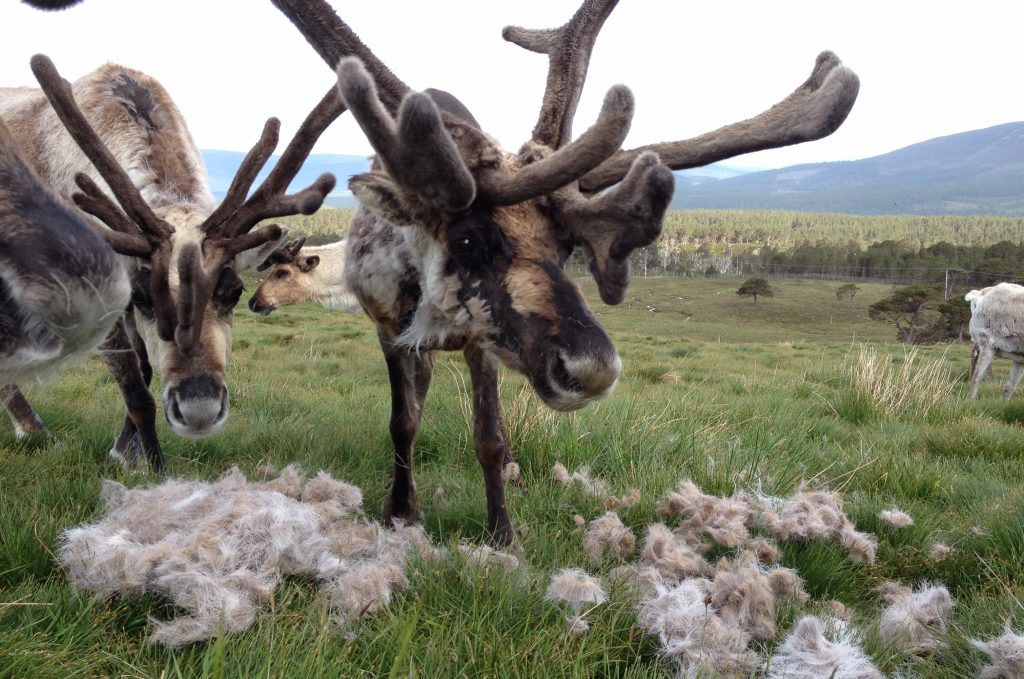Whilst we’re lucky enough to live here in the Cairngorms, the only area of sub-arctic ecosystem left in the UK, and generally associated with snow and winter sports, we do (occasionally!) get some glorious sunny weather too. Loch Morlich beach turns into a resort, people are braving a dip in the water, and ice creams are being consumed.

But what happens to those arctic survival specialists that we look after, the reindeer? I have to say whilst I look forward to the sun, my heart also sinks a little that the herd are going to be unimpressed.
Reindeer are native to this area and habitat, as well as being found right across Scandinavia and Russia. And although those areas experience extreme cold, the summer temperatures rise to a similar level as here at Cairngorm. I actually looked up some average temperatures of prime reindeer herding locations in Sweden (Kvikkjokk by Sarek National Park) and Norway (Tromso) and compared them to Cairngorm.



It was interesting to see that their average summer temperatures actually exceed ours here, though they have much colder, and longer, winters. So, reindeer are definitely able to cope with the warmer temperatures – how do they do this?

Firstly, the reindeer have a much shorter, cooler summer coat than their insanely thick winter coat. From May they are moulting rapidly, looking like shaggy beasts with bad hair-dos, though with so much fur to lose it can take them until July to be fully into their sleek summer outfit. This must be much nicer for the sunny days – like when you’ve had a haircut and can feel the breeze on your neck!

Whilst reindeer don’t sweat like humans, they instead act like (large, overgrown, funny looking) dogs – flopping down and panting. This can look quite dramatic as their whole body moves with each breath, but it does seem to work. They do like the shade and will often sardine themselves into the shed in our Hill enclosure!
Another technique is to pee… a lot! By peeing, hot liquid is expelled from the body, and is replaced with cooler water as they drink to replace it, almost like an internal cooling system.

Reindeer also become “Beasts of the Bog” and disappear into muddy ditches and hollows, often lying down to cool their bellies. They will occasionally wade into pools and have even been known to swim in the loch – they are of course marvellous swimmers with their huge hooves.

The herd also tend to naturally choose the higher ground on hot days – in general there is a 1ºC drop in temperature for every 100 m gain in height (due to the lower air density), and this, along with the greater likelihood of a breeze to cool them, means the ridges and high tops of mountains are preferred when the sun is out. Up there, there is also more chance of late-lying snow drifts – even as late as August here in the Cairngorms, which are the ultimate cool bed to lie on!

So, while I do feel sorry for our reindeer on hot cloudless summer days, as they would much prefer the snows of winter, it turns out that they are pretty well adapted to cope with whatever the weather throws at them!
Andi
